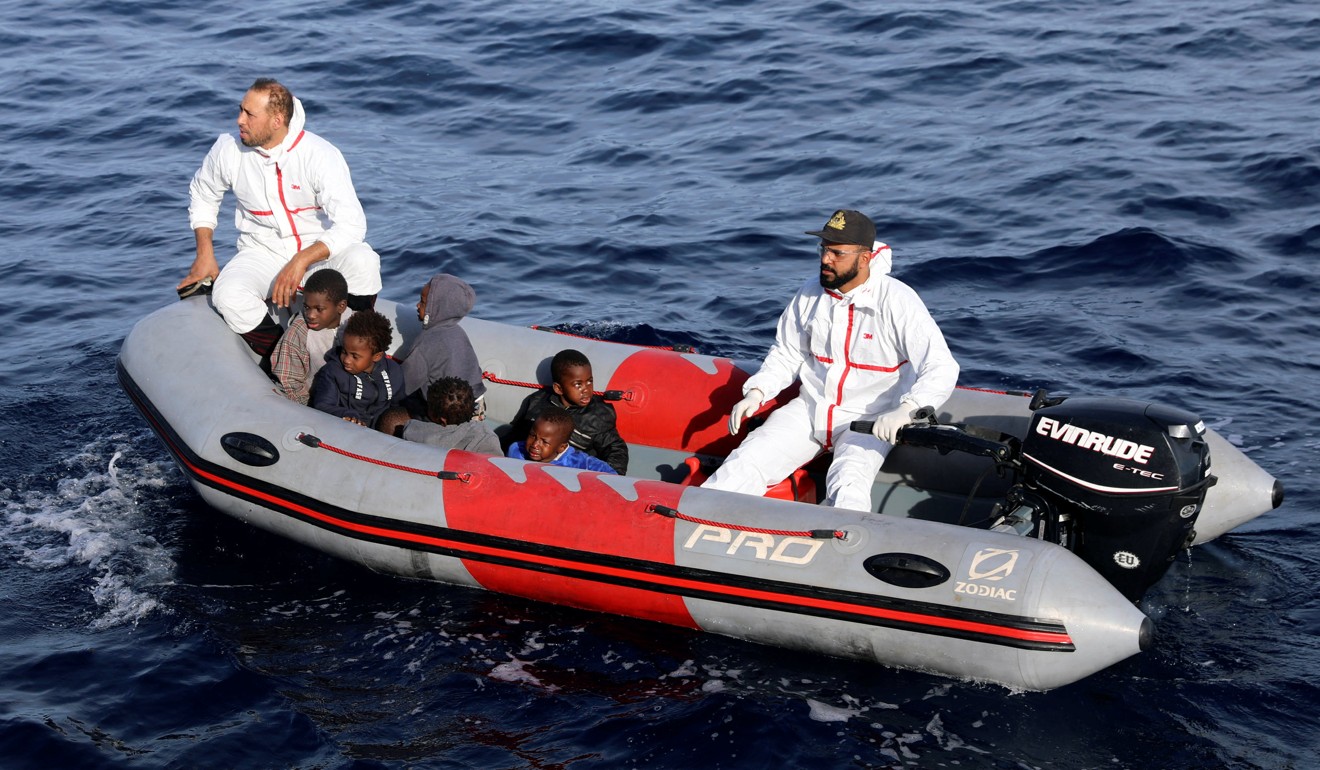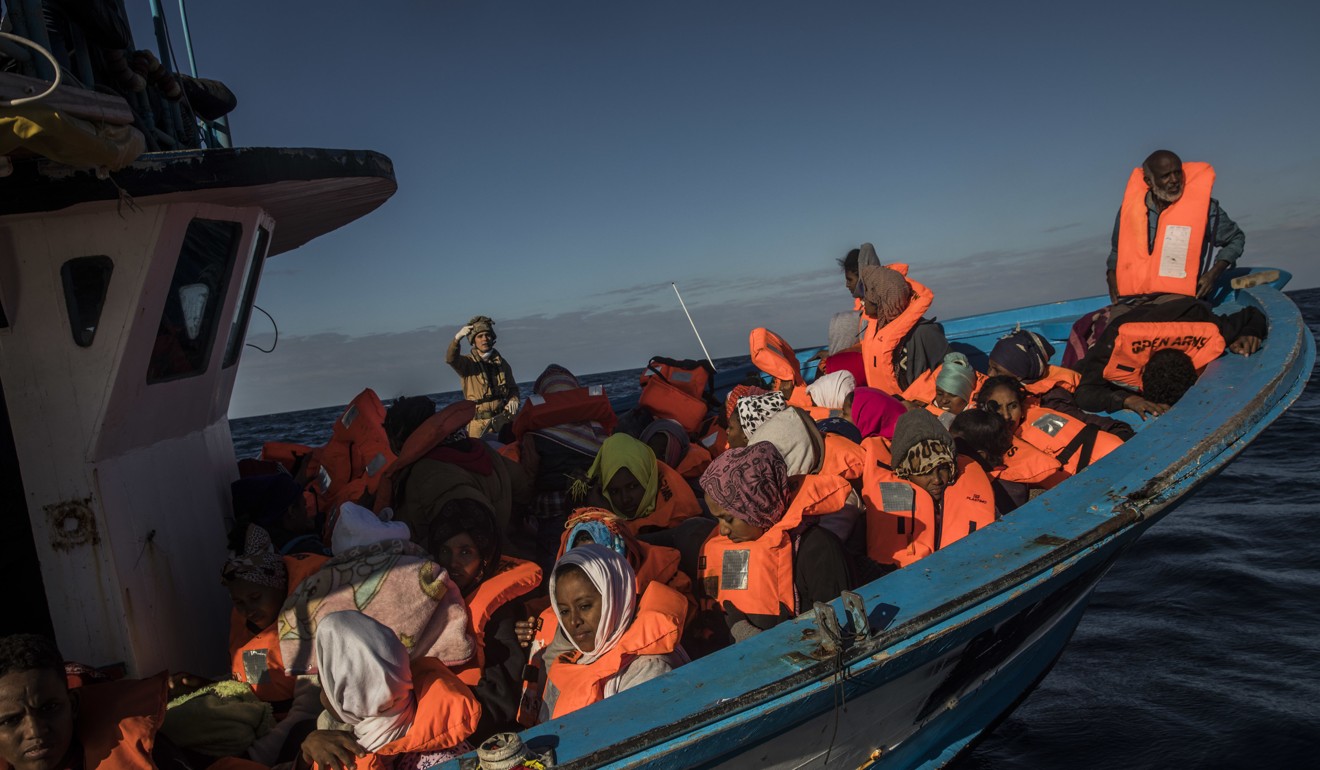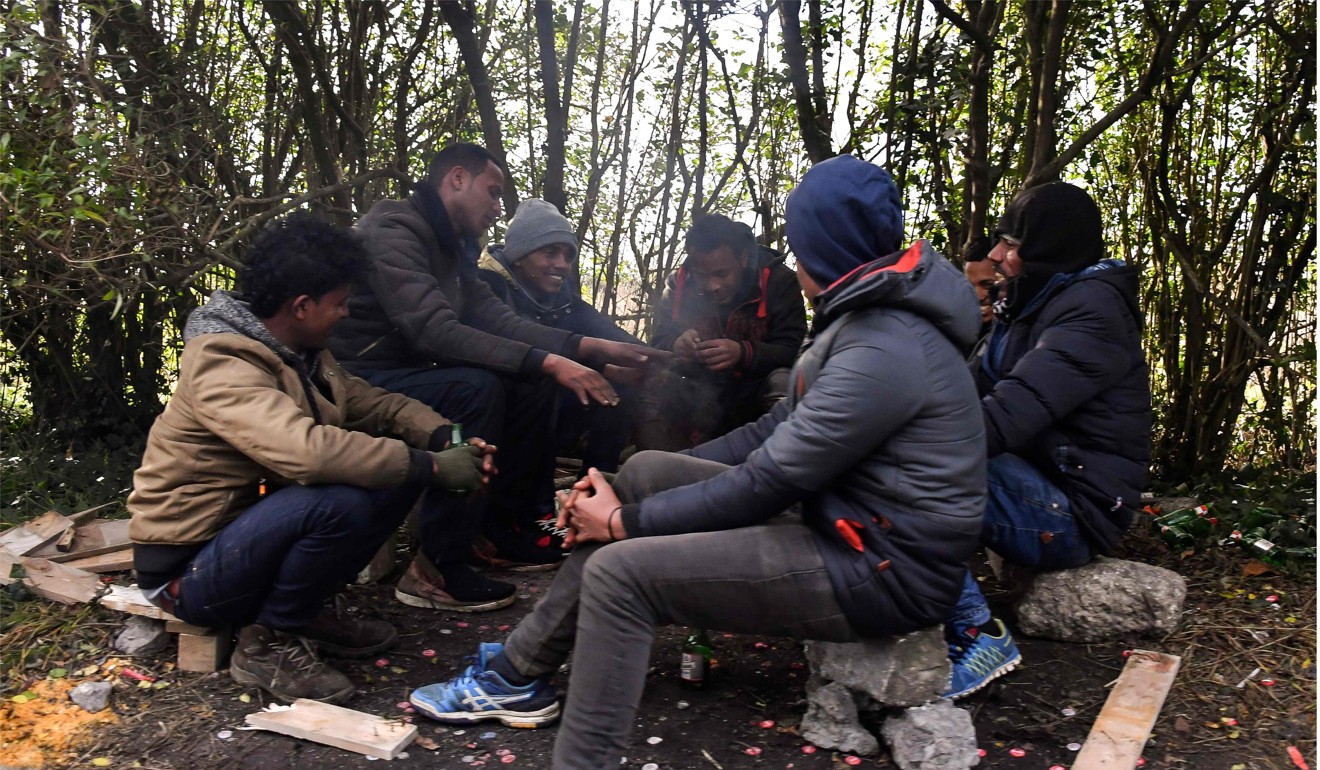
90 people – most Pakistani – are feared dead as migrant boat capsizes off Libya on way to Europe
An estimated 90 migrants were feared to have drowned early Friday, leaving three known survivors and 10 bodies washed up on the Libyan shore
Up to 90 migrants were feared dead after a smugglers boat capsized off the coast of Libya early on Friday as Europe struggle under the weight of the continued stream of migrants.
Most migrants on board the capsized boat off the coast of Libya were Pakistani, survivors told aid workers.
An estimated 90 migrants were feared to have drowned leaving three known survivors and 10 bodies washed up on shore, the International Organisation for Migration (IOM) said.

“What has been reported to us is that it’s mostly Pakistanis who were on board the boat, but we still need to verify the nationalities and how many from what country,” IOM spokeswoman Olivia Headon told a Geneva news briefing.
“I believe the Libyan coastguard is looking for other survivors off the coast,” Headon said, speaking from Tunis.
Headon said Pakistani nationals are increasing among the number of migrants attempting to cross the Mediterranean to Italy and Europe via Libya.
By nationality, Pakistanis last year made up the 13th largest nationality represented among migrants making the crossing, but they were the third-largest contingent in January.
France sees ‘historic’ 100,000 asylum claims in 2017
Another IOM spokesman, Leonard Doyle said that the boat was believed to have left shore on Thursday before capsizing early on Friday morning.
Pakistan’s Foreign Ministry said 11 of its citizens had drowned in the incident. Ministry spokesman Mohammad Faisal said that Pakistani diplomats have arrived in Libya’s coastal area to collect more details and begin the process of repatriating the bodies.
More than 6,600 people crossed the Mediterranean in January – about two-thirds of them to Italy – about a 10 per cent increase from a year before, according to IOM. About 250 people died in the crossing in January, six fewer than a year ago.

The tragedy shows the continued allure of Europe for desperate migrants fleeing conflicts and poverty, Doyle said, despite tighter surveillance of the main smuggling routes by the Libyan coastguard, backed up by European cash and know-how.
“They (the migrants) are lured there by social media. They get onto a phone, they are promised El Dorado, they think life is going to be great.
“And before they know it, they are getting into the hands of awful criminal, extorting people – smugglers, traffickers, this dreadful, shocking torture,” he said.
Zuwara, located near Libya’s border with Tunisia, was a favoured site for migrant boat departures over the past two years but of late has seen only occasional departures.
Libya is the main gateway for migrants trying to cross to Europe by sea, though numbers have dropped sharply since July as Libyan factions and authorities – under pressure from Italy and the European Union – have begun to block departures.
More than 600,000 people are believed to have made the journey from Libya to Italy over the past four years.
The Libyan coastguard, which receives EU funding and training, has become more assertive in recent months in intercepting migrants and bringing them back to Libya.
Activists have criticised the policy, saying migrants often face extreme hardship and abuse in Libya, including forced labour, according to Human Rights Watch and other rights groups.
Migrants who are caught trying to cross to Italy are put in severely overcrowded detention centres authorised by the interior ministry.

Separately, Serbian authorities say they have removed dozens of migrants from Belgrade’s streets and transferred them to migrant centres.
Authorities said in a statement that there have been no incidents during the early Friday raid in the Serbian capital.
A video published by Serbian media showed migrants coming out of a run-down building and being moved onto a bus.
Migrants sleep rough on Serbia’s border hoping to cross into EU
About 4,000 migrants remain stuck in Serbia trying to move on toward wealthy European Union nations.
Many have been trying to illegally cross the borders with neighbouring EU nations Croatia and Hungary, with the help of smugglers.

In another development, police reinforcements are arriving in the French port city of Calais after clashes among migrants left 22 people injured, as the interior minister warned of a worrying spike in violence.
Interior Minister Gerard Collomb told reporters in Calais on Friday that five of the victims were injured by gunfire in Thursday’s fighting, blaming “totally organised” gangs. Police are seeking a shooting suspect but have made no arrests.
Collomb said two extra police units were en route and warned of growing tensions in Calais, where migrants converge in hopes of crossing to Britain.


